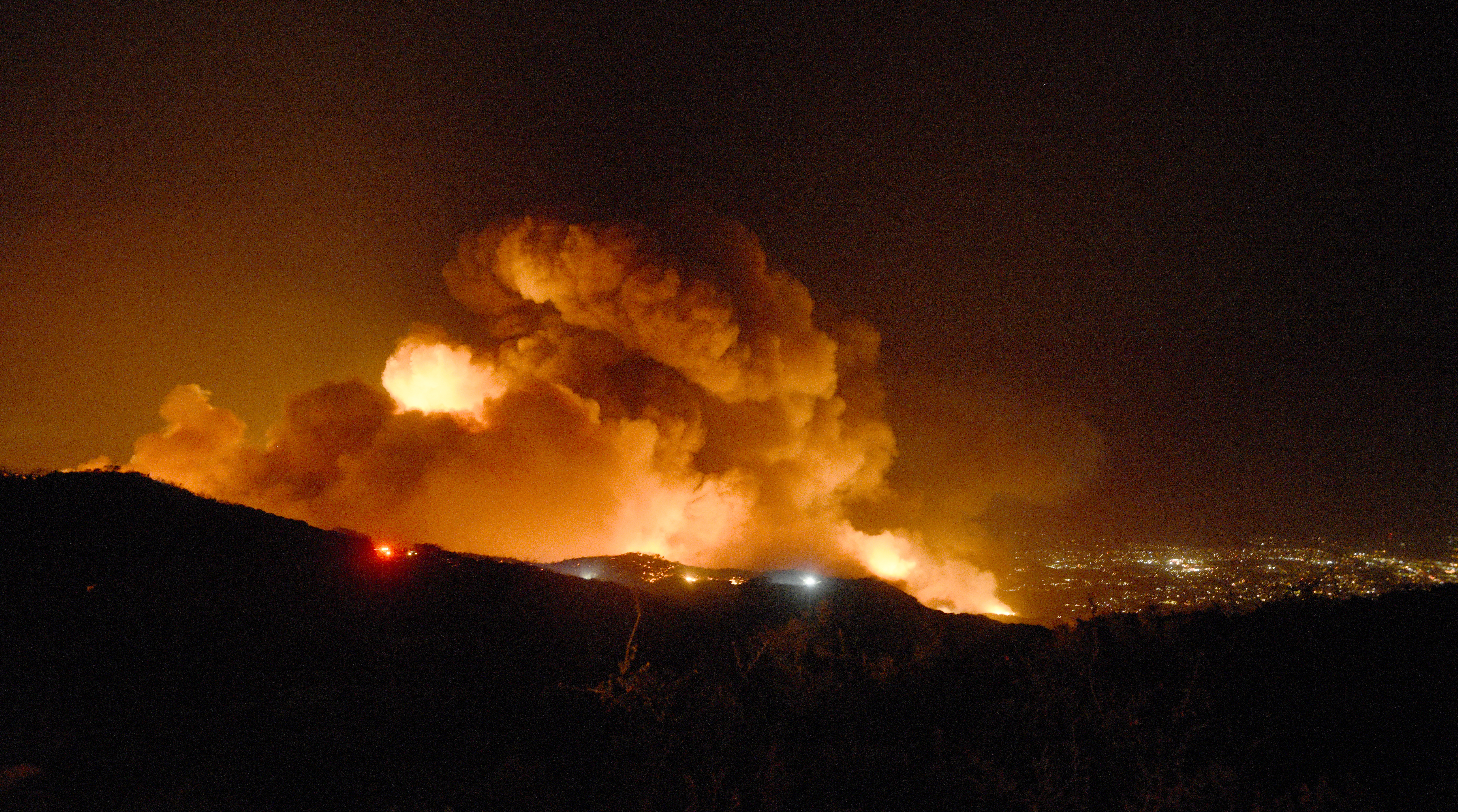Sending the Right Message During a Disaster
County Working Kinks out of Emergency Alert System Following Cave Fire

When the Cave Fire broke out in the Santa Ynez mountains above Camino Cielo around 4 p.m. on November 25, the Santa Barbara County dispatch office quickly realized that flames were headed straight down the hill toward populated parts of the county. They immediately issued an emergency alert.
The first alert went out smoothly. But later in the evening, when evacuation order alerts were about to be sent, the entire messaging system froze. It turned out that when entering the Spanish version of the alert, the tilde over an ñ caused a massive glitch, forcing the Office of Emergency Management (OEM) to get tech support while the evacuation message remained suspended in space.
“I only received one text from S.B. County Aware & Prepare, which was not until 8:30 p.m.,” said Kendra Duncan O’Connor, who evacuated on her own accord at 7:45 p.m. Monday night. “At this point, my neighborhood was in serious jeopardy. San Antonio Creek Road was on fire.”
Despite these problems, people in other neighborhoods praised the alert system for working better than in any past disasters. The Cave Fire took no victims and destroyed only one nonresidential structure. The county is now analyzing what worked well with its emergency alert system and what still needs to be fixed before the next disaster strikes.
The county learned from mistakes it made during the 2018 Montecito Debris Flow, when 23 people died, 19 of whom lived in the “voluntary” evacuation zone. Among other errors, the county distributed incorrect evacuation maps.
To correct this flaw, the OEM now has its own full-time GIS [geographic information system] specialist who assists with drawing evacuation maps, according to Raquel Zick, spokesperson for the Sheriff’s Office.
Zick explained that after the initial dispatch alert goes out, all emergency messages following have to go through a representative from about 14 county agencies before being sent to the public, which eats up a large amount of time. The messages must be sent twice — once in Spanish and once in English — because bilingual alerts are required by law.
The county’s main public alert tool is ReadySBC. Currently there are 331,135 registered accounts with ReadySBC, a huge increase from just a year ago, when only 52,850 were registered.
ReadySBC alerts (previously known as Aware & Prepare) are powered by Everbridge, which also runs Wireless Emergency Alerts (WEA), a federal public-messaging system that goes through the Federal Emergency Management Agency and uses cell phone towers. WEA is the only alert system the public doesn’t need to sign up for ahead of time to receive alerts.
Although Everbridge can be incredibly helpful in creating a single platform to send out multiple messages, the system is too easy to trip, such as when the simple letter ñ in a Spanish message shut down the whole Everbridge platform. Although this was a machine error rather than a human one, it needs to be addressed before the next emergency hits.
“The emergency notices were sent too late at night,” said Greg Trainor, whose house was in the “voluntary” zone during the Cave Fire. Many people living in the same zone also reported receiving such notifications after 10 p.m. Tuesday night and were concerned that if the Cave Fire had been a deadlier situation, they would have never woken up to see the notification.
Though the county is taking great strides to improve its notification system, it’s still up to Santa Barbarans to make sure they’re signed up for ReadySBC and prepared to evacuate in emergencies even without the county’s prompting.



